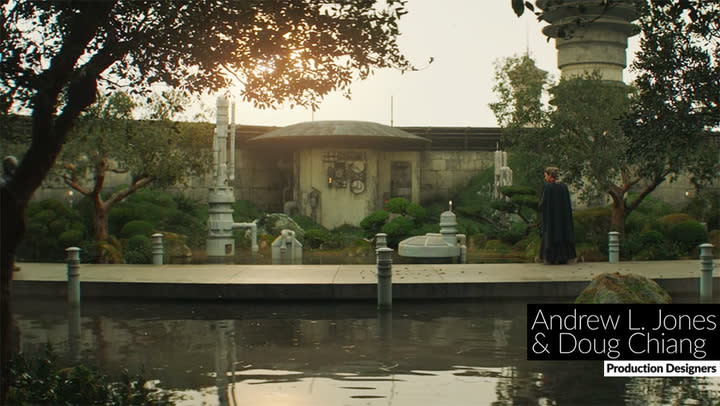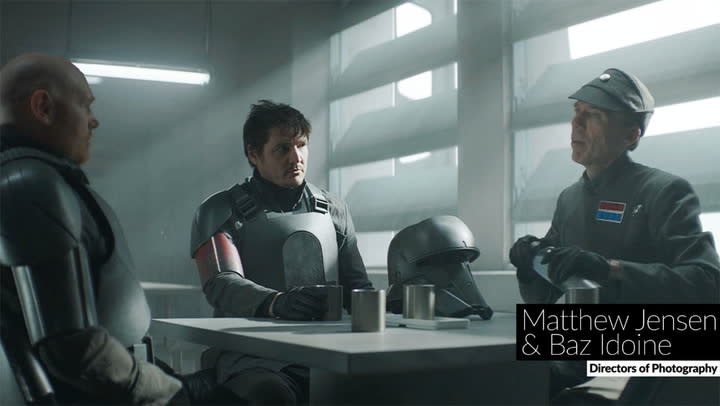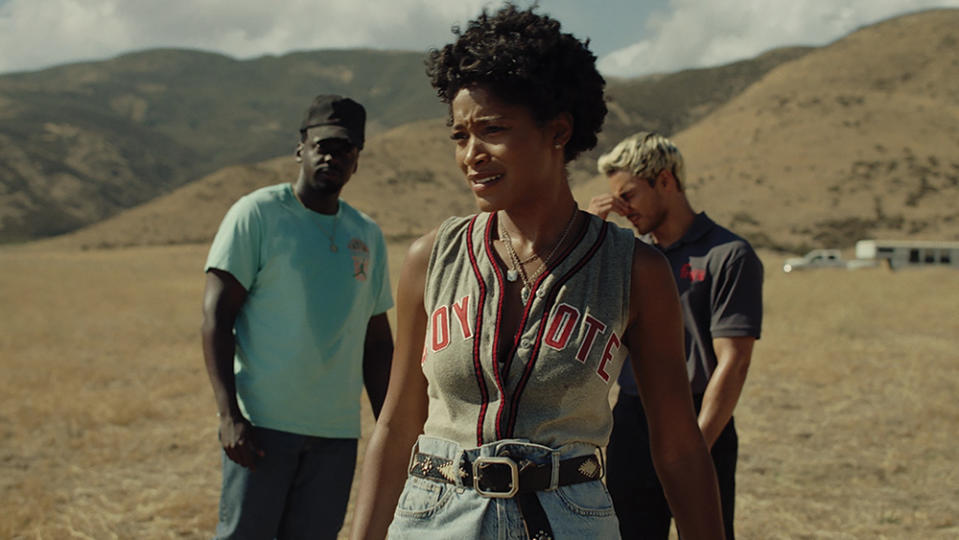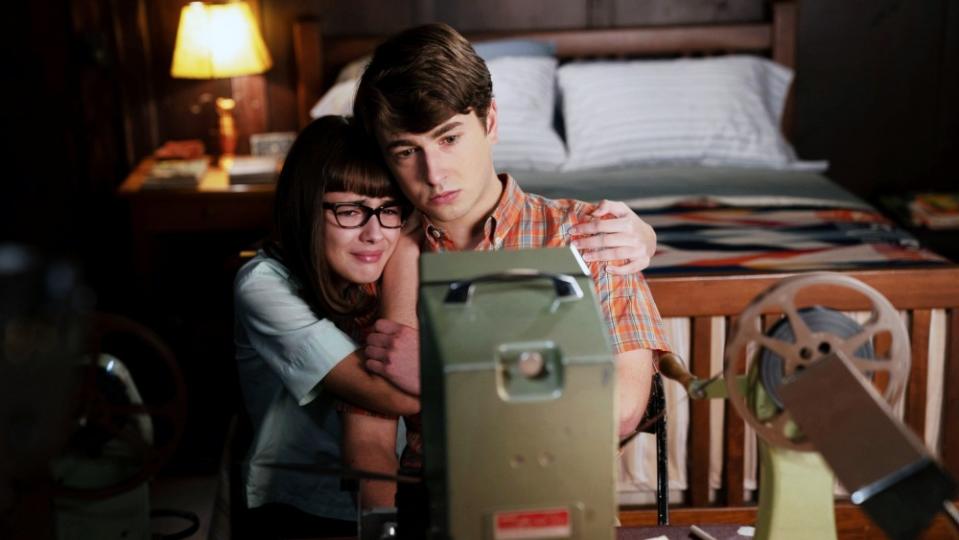‘The Mandalorian’: Crafting the Evocative, Grounded Worlds of Star Wars

- Oops!Something went wrong.Please try again later.
- Oops!Something went wrong.Please try again later.
- Oops!Something went wrong.Please try again later.
- Oops!Something went wrong.Please try again later.
Curated by the IndieWire Crafts team, Craft Considerations is a platform for filmmakers to talk about recent work we believe is worthy of awards consideration. In partnership with Disney+, for this edition we look at how costume designer Shawna Trpcic, production designers Andrew L. Jones and Doug Chiang, and directors of photography Matthew Jensen and Baz Idoine pushed the world-building of the Star Wars series “The Mandalorian” in its second season.
If there are two skills that define the crafts team assembled by series creator Jon Favreau, it’s how they simultaneously look to the past and the future in designing the story of the Mandalorian (Pedro Pascal). Led by concept artwork by production designer Doug Chiang, who came up under George Lucas, the series is steeped in the philosophy of how to graphically tell story of new, far-off, fictional worlds.
More from IndieWire
'Black Bird' Creates Uneasy Truths Through Performance, Pace, and Sound
'Crater' Review: Scott Mescudi Flatlines Otherwise Cutesy Disney+ Tween Adventure
“This goes back to sort of the classic idea from George Lucas, which is Star Wars is really a historical drama,” said Chiang. “We’re not really creating sci-fi environments. These are grounded environments as if it’s on a real different place.” Positioning the viewer in a new planet’s topography, weather, and history is ingrained in every textured fabric, wintery silver sky, and rusted building of “The Mandalorian.”
And yet, at the same time, no movie or television series has done more to push forward the technology of how motion pictures are made. For Season 1, Favreau made the bold step of utilizing ILM’s StageCraft — an enormous curved wall of LED panels, know as “the volume,” which projects a real-time, photo-real virtual backdrop — as its primary shooting stage. And, as you’ll see in the videos below, the Season 2 team built off the lessons of Season 1 to create even more exciting and evocative virtual worlds, while keeping them grounded in reality.

The Costume Design of “The Mandalorian”
Shawna Trpcic wanted to become a costume designer because of the original Star Wars films, and the chance with “The Mandalorian” to work in the same time period as the 1977 to 1982 films was a dream come true for the self-described “purist.” When she discovered she’d be dressing Luke Skywalker (Mark Hamill) for the Season 2 finale, she sweated every detail.
“I called my friend at Skywalker Ranch and asked her to photograph every single inch of his original black jedi costume,” said Trpcic. “They measured every fold, the width of the belt, I had every single bit of information, what kind of fabric they used, close-ups of the weave, I even had them show me the seam allowance.”
That kind of obsessiveness over original detail might seem extreme, but, as Trpcic details in the video above, it was about capturing how the original trilogy used costume to tell story.
“The texture, the showmanship and the beauty of the movement of the fabrics, that heaviness, the drape, told as much story about the character as the character’s performance,” said Trpcic. “And I wanted to capture that.”
As the costumer discusses in the video, Season 2 also offered her opportunities to introduce new elements to the series lore, such as making the stiff stormtroopers more mobile, and introducing the live-action versions of fan-favorite characters Bo Katan (Katee Sackhoff) and Ahsoka Tano (Rosario Dawson).

The Production Design of “The Mandalorian”
Thanks to Jon Favreau’s decision to share Doug Chiang’s original concept art at the end of each episode, the audience has become familiar with the foundational contribution this visionary artist/designer (and VP and executive creative director of Star Wars) has made to the characters, vehicles, and the literal world- (or planet-)building of the franchise.
Due to the nature of the volume, and the time it takes to generate the real-time, photo-real backdrops, Chiang starts sketching before scripts are written. Favreau and writer/director/EP Dave Filoni share early ideas for episodes with the production designer, and a back-and-forth develops between the writers’ room and the art department. “What’s wonderful about that process is that it parallels my working relationship with George Lucas,” said Chiang. “Where the art actually informs the story, as well as the story informing the art.”
Chiang’s concept drawings are just the first step in the elaborate production design process. When the virtual art department hands off their artwork and 3D models to Andrew L. Jones, the production designer and his team turn them into game assets so that they can be shaped, manipulated, painted, and textured in the virtual world, while also deciding what needs to be built on stage to create a seamlessness (through the eye of the camera) between the physical and virtual sets.
“The scripts are completely aspirational and the artwork is very aspirational,” said Jones. “When it starts to become real, that’s when we’ve got to see how we can keep everything we’ve liked so far, matching the concept and the spirit of that, but also starting to think about how it’ll work with a performance that’ll go through the environment.” Chiang indicated the success of this process can be seen by how much of the essence of the concept drawings in the post-credit sequences was been translated into the episode you just watched.
In the video above, Chiang and Jones take us through how they told the story “Chapter 13: The Jedi,” and created a visual history of Calodan, a planet under the tyrannical rule of Morgan Elsbeth (Diana Lee Inosanto).

The Cinematography of “The Mandalorian”
The environments that Chiang and Jones design for the volume are not only the setting, they are also its base lighting source, as the LED panels emit the realistic light of each environment. As the go-to cinematographer for Patty Jenkins (“Wonder Woman”), Matthew Jensen is hardly a stranger to working closely with VFX supervisors, but nothing prepared him for when he joined Season 2 of “The Mandalorian” and he had the creative freedom to position the sun and determine its quality of light during pre-production.
“I really was amazed at the tools and how integrated a DP could be in the process,” said Jensen. “We all had to work as a team to construct something that was realistic, but also useful for me in terms of a lighting environment.”
Baz Idoine, who had been thrown into the fire of figuring out how to shoot on the volume in Season 1, saw how its capabilities as a light tool expanded in Season 2. “We did have that steep learning curve in Season 1,” said Idoine. “And so [for Season 2] Jon Favreau wanted us to do more challenging lighting environments we hadn’t previously considered.”
In the video above, Idoine and Jensen bring us inside two of those challenging Season 2 light environments. In “Chapter 13: The Jedi,” Idoine brought to life an extremely dark, smokey, and evocative world the was inspired by Northern California forest fires and the wind-swept cinema of director Akira Kurosawa. Then, with Season 2’s penultimate episode, “Chapter 15: The Believer,” Jensen tackled the lush, sunny planet of Morak, which he used to contrast the interior of a secret Imperial mining facility in order to create a tension-filled atmosphere where Mando is forced to take his helmet off.
“The Mandalorian” Seasons 1 and 2 are available to stream via Disney+.
READ MORE CRAFT CONSIDERATIONS

Hot Wheels and Realism: Crafting Stunts for ‘The Night Agent’
The Netflix series’ star Gabriel Basso and stunt coordinator Mike Mitchell told IndieWire about the combination of prep and spontaneity that made the fights so visceral.
By Jim Hemphill
4 hours ago

‘Black Bird’ Creates Uneasy Truths Through Performance, Pace, and Sound
Watch how the editing, cinematography, and sound intensify the real-life story of a suspected serial killer in the Apple TV+ limited series.
By Daron James
May 17, 2023 4:00 pm

‘Nope’: How Keke Palmer Grounded an Out-of-This-World Horror Story
Watch star Keke Palmer discuss how she and filmmaker Jordan Peele figured out how to tell a sibling-bond story with sky-high stakes.
By Marcus Jones
January 9, 2023 3:30 pm

Weaving ‘The Fabelmans’ from Steven Spielberg’s Childhood Memories
Watch Pulitzer Prize winner and Academy Award nominee Tony Kushner discuss translating his longtime collaborator’s life into a screenplay.
By Jim Hemphill
January 5, 2023 2:30 pm
Best of IndieWire
Where to Watch This Week's New Movies, from 'Fast X' to 'Master Gardener'
Every Palme d'Or Winner from the Cannes Film Festival, Ranked
Sign up for Indiewire's Newsletter. For the latest news, follow us on Facebook, Twitter, and Instagram.

